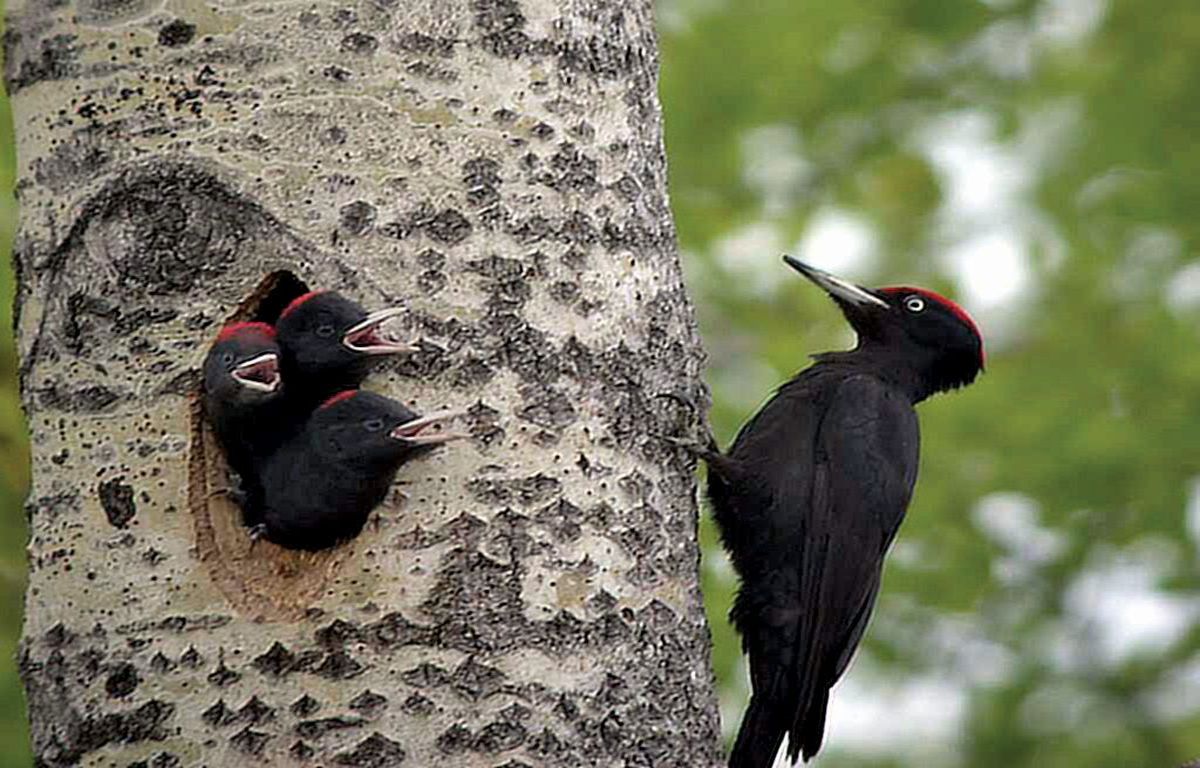
Ever wondered why woodpeckers don't get headaches? These fascinating birds have some incredible adaptations that allow them to peck away without any issues. From their shock-absorbing skulls to their super-strong beaks, woodpeckers are built for a life of constant drumming. But that's not all! Did you know that woodpeckers can peck up to 20 times per second? Or that their tongues can be three times longer than their beaks? These amazing creatures also play a crucial role in their ecosystems by controlling insect populations and creating nesting sites for other animals. Ready to learn more? Let's dive into 29 mind-blowing facts about woodpeckers!
Woodpecker Basics
Woodpeckers are fascinating birds known for their unique behaviors and adaptations. Let's dive into some intriguing facts about these remarkable creatures.
- Woodpeckers belong to the family Picidae, which includes around 240 species.
- These birds are found on every continent except Australia and Antarctica.
- Woodpeckers have zygodactyl feet, meaning they have two toes facing forward and two backward, aiding in climbing trees.
- Their stiff tail feathers act as a support while they peck at tree trunks.
- Woodpeckers have a specialized tongue that can extend far beyond their beak to extract insects from crevices.
Pecking Power
The pecking behavior of woodpeckers is not just for show. It serves several critical purposes.
- Woodpeckers peck to find food, such as insects and larvae hidden in wood.
- They also drum on trees to communicate with other woodpeckers, especially during mating season.
- A woodpecker can peck up to 20 times per second.
- Their beaks are incredibly strong and chisel-like, perfect for drilling into wood.
- Woodpeckers have a unique skull structure that absorbs the shock of pecking, preventing brain injury.
Unique Adaptations
Woodpeckers have evolved several unique features that help them thrive in their environments.
- Their tongues are barbed at the tip, making it easier to catch insects.
- Woodpeckers have a special bone called the hyoid that supports their long tongue.
- They possess a third eyelid, known as a nictitating membrane, which protects their eyes from debris while pecking.
- The nostrils of woodpeckers are covered with feathers to keep out wood dust.
- Their brains are tightly packed within the skull, reducing movement and potential injury from pecking.
Habitat and Diet
Woodpeckers are versatile birds that can adapt to various habitats and diets.
- They are commonly found in forests, woodlands, and even urban areas with plenty of trees.
- Woodpeckers primarily eat insects, but some species also consume fruits, nuts, and sap.
- The acorn woodpecker stores acorns in tree holes, creating a food cache for later use.
- Some woodpeckers, like the sapsucker, drill holes in trees to drink the sap.
- Woodpeckers play a crucial role in controlling insect populations, benefiting the ecosystem.
Reproduction and Lifespan
The reproductive habits and lifespan of woodpeckers are as interesting as their pecking behavior.
- Woodpeckers are monogamous and often form long-term pair bonds.
- They excavate nest cavities in dead or decaying trees, providing a safe place for their eggs.
- Both parents share the responsibility of incubating eggs and feeding the chicks.
- Woodpecker chicks are born altricial, meaning they are blind and featherless at birth.
- The average lifespan of a woodpecker ranges from 4 to 11 years, depending on the species.
Conservation and Threats
Despite their adaptability, woodpeckers face several threats that impact their populations.
- Habitat loss due to deforestation and urbanization is a significant threat to woodpecker populations.
- Pesticide use can reduce the availability of insects, their primary food source.
- Some species, like the ivory-billed woodpecker, are critically endangered or possibly extinct due to habitat destruction.
- Conservation efforts, such as protecting old-growth forests and creating artificial nesting sites, are crucial for the survival of woodpeckers.
The Final Peck
Woodpeckers are truly fascinating creatures. From their unique drumming behavior to their specialized beaks and tongues, these birds have adapted in remarkable ways. Their ability to carve out homes in trees not only benefits them but also provides shelter for other animals. They play a crucial role in maintaining healthy forests by controlling insect populations and aiding in the decomposition of dead trees.
Understanding these facts about woodpeckers helps us appreciate their importance in our ecosystems. Next time you hear that familiar tapping sound, you'll know a bit more about the incredible bird behind it. Keep an eye out for these amazing creatures, and maybe even share some of these fun facts with friends and family. Woodpeckers are more than just noisy neighbors; they're vital parts of our natural world.
Was this page helpful?
Our commitment to delivering trustworthy and engaging content is at the heart of what we do. Each fact on our site is contributed by real users like you, bringing a wealth of diverse insights and information. To ensure the highest standards of accuracy and reliability, our dedicated editors meticulously review each submission. This process guarantees that the facts we share are not only fascinating but also credible. Trust in our commitment to quality and authenticity as you explore and learn with us.
